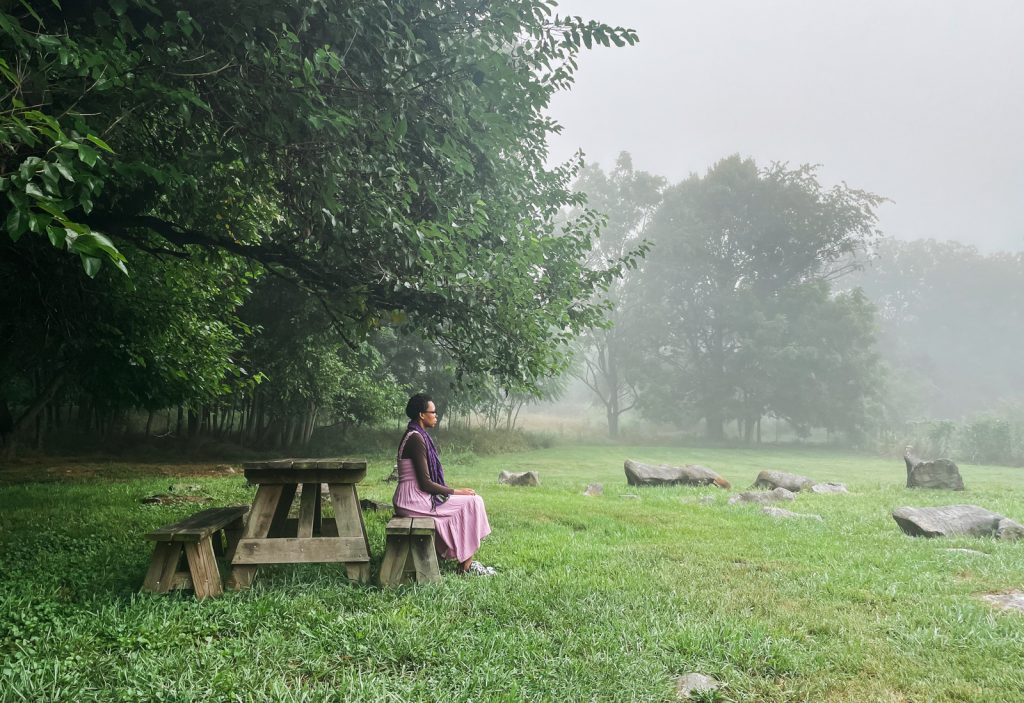“Relax and receive, feeling the sensations of the body breathing.”
The words washed over us as we sat in a circle on our zafus at the beginning of the five-day meditation retreat. Dr. Nikki Mirghafori, artificial intelligence scientist and Buddhist teacher at Spirit Rock Meditation Center and Insight Meditation Center in Redwood City, California, sat toward the top of the circle, inviting us with these words as we settled into our bodies and took a breath.
“Cultivating Peace, Wisdom, and Kindness: A 5-day Meditation Retreat for Young Adults” was hosted by Dharma Gates and sponsored by Tricycle. Dharma Gates is a grassroots nonprofit dedicated to opening pathways into formal meditation practice for young adults. Its mission is to connect young practitioners to a variety of Buddhist teachers and practice centers in an accessible manner, offering retreats on a dana (donation) basis. The organization strives to foster connections through which practitioners can cultivate compassion, resilience, and clarity to meet the unique challenges of our times.
This retreat, hosted at Claymont Society in Charles Town, West Virginia, focused on fostering a space for young adults to step back from the day-to-day bustle and reconnect with each other, ourselves, and the dharma. Balancing sitting instruction, dharma talks, relational practices in the form of improv, and walking meditation, the retreat offered an opportunity to explore the world of the dharma and encouraged us to take our practice into all aspects of life, not just the cushion.
I arrived Wednesday afternoon, excited and anxious, but open to whatever was to come. I had done a handful of daylong retreats before, but this was truly my first formal silent retreat. After checking in, kind smiles and friendly conversation ensued as we enjoyed a vegan dinner of vegetable stir fry made by the very humble and incredibly warm chef on site, Manuel. After we finished eating, I sat on the lawn with Nikki and some fellow retreatants, checking in about how we were feeling. That’s when we met Chilli-dog. Chilli, Manuel’s dog, was a chestnut-colored dachshund with big brown eyes and floppy ears. As he ran through the field, we realized that he was chasing rabbits left and right, even crawling his way down what I assumed to be a rabbit hole. Jumping all around, Nikki likened our mind to Chilli-dog. I thought about how funny it was that he was literally going down rabbit holes, chasing the bunny like we chase our thoughts. Nikki said we should try to avoid a “Chilli-mind.”
The evening came, and the unsure energy buzzed around the meditation hall as we sat, awaiting the terrifying practice of renouncing our cell phones. After introductions and a brief share from each member of the group, the ritual began. Pens and paper were passed around, and we each wrote a letter to our future self, which we would open and read on Sunday. We were instructed then to wrap our phone in the piece of paper, tape it up, and write encouraging words on the paper, if we wished. Settling in and closing our eyes, we took a few breaths, and one by one, as we felt ready, we stood up and walked to the center of the circle, offering our phones in the basket and bowing to the statue of the Buddha. Nikki honored each release with the sound of a bell. I felt a sense of relief, freedom, even joy, as I dropped my phone in and let go.
The session progressed by taking the precepts together, taking refuge in the Buddha, the dharma, and the sangha, and relaxing into a guided meditation. The retreat had officially begun. We sauntered off to our rooms to rest before the first full day ahead.
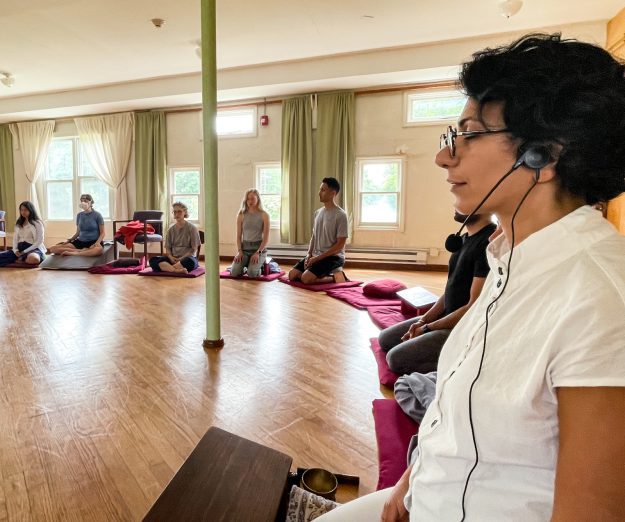
Thursday morning came, and we enjoyed a silent breakfast after an optional 6:30 a.m. sit. After cleaning up with my fellow dish crew, the first session of the day began, and we settled again onto our cushions. A feeling of butterflies in my stomach arose, as I knew what was to come—improv.
Nikki had taught both improv and mindfulness courses, and shared with us how similar the two are. Improv is about letting go of planning and tuning awareness into the present moment. It is important in improv, I learned, to not only become grounded and present with what is coming up in your own body but also to pay close attention to the people around you. First up, a name game. We went around the circle, stating our name alongside a movement, gesture, or dance move. I was toward the end. Nikki reminded us to stay present and let go of trying to prepare. That was easier said than done, as my mind ruminated on what move I was going to make. Three people down, twenty-six to go. I’ll do a spin. Eight people down, twenty-one to go. I can’t do a spin, too many people have spun already. Maybe a curtsy, yes that’s it! Fifteen people down, now just a handful more. The curtsy was used already! What will I do? What if it’s my turn and I freeze and do nothing? I’ll look really stupid then. Three people to go before my turn, and my mind was blank. I didn’t have any gesture in mind, but I had no choice but to let the moments pass until all eyes were on me. Without thinking, I just did. Jumping from one side to the other, announcing my name, “ERIN,” and it was over. That’s when the lesson stuck, and I truly let go.
The theme arose again and again throughout the retreat: Don’t plan, just be. Rather than thinking into the next moment, I leaned back into right now. In our discussion session a few days later, Nikki offered something of great value to me: Rather than FOMO, the fear of missing out, embrace JOMO, the joy of missing out. Referring to the mind wandering into the future or backtracking to the past, we can just rest in the present moment, joyful that we’re missing some made-up future event.
The anxiety dissipated, and my body began to feel at ease again. A few more games, and the nerves I felt initially turned into openness and full-belly laughs. Connection was blossoming before my eyes.
At lunch we officially entered the space of noble silence, narrowing our sense doors. In the short free time before the next sessions, I wandered the grounds, following a grassy path through the wooded field and stumbling upon a big, tall, bountiful tree locally called “grandmother tree.” As I sat under her long branches, I wrote:
Oh, grandmother tree
Big, tall, proud, and beautiful.
Your base stable
Your limbs long and outstretched.
Hold me under your grace and power.
I surrender to you,
Grandmother tree.
The sessions that followed that afternoon were interspersed with guided, silent, and walking meditations. Many of us chose to walk outside, connecting with the land with mindful steps and gentle movements.
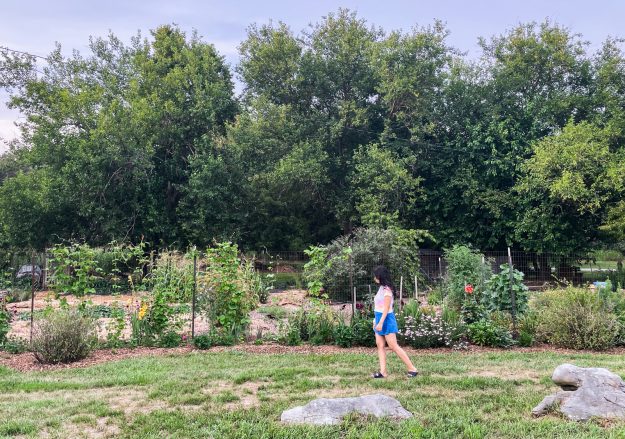
One of the notable guided meditations from Nikki invited us to receive our intention; our reason for being at the retreat. We imagined picking up a stone, asking ourselves “why are we here?” and dropping it into an imagined well. Nikki instructed us to again “relax and receive” whatever came up, not forcing or searching, but opening to whatever arose. The meditation steered us more deeply into our intention, picking up two more stones and dropping them in the well, asking what was truly the reason, the intention, for our being there.
In addition to the meditation sessions, each day we settled into the meditation hall at 4:30 p.m. for Nikki’s dharma talk. Of the many teachings she offered, two really stood out to me. The first came closer to the start of the retreat and focused on mindfulness of emotions. Nikki offered a practical tool for when emotions arise in practice, known as RAFT or RAFCT:
– R: Recognize the emotion. Drop the story.
– A: Accept/Allow it to be here, held spaciously.
– The middle way between suppression and indulgence.
– F: Feel in the body.
– If needed, C: Compassion—addressing yourself: “Sweetheart, you’re having a hard time,” or “This is hard, dear.”
– T: Trust in the unfolding of the practice, in your capacity to awaken.
I found myself returning to this often, both on and off the cushion when feelings arose. Feeling into each emotion and exploring them with curiosity helped cultivate an acceptance and comfort within difficulty.
Another dharma talk focused on the five hindrances, or the kilesas. Nikki explained these as coverings or veils that show up in practice, and offered skillful ways of working with them when they show up. As the days of practice went on, I was able to pinpoint exactly which hindrances were showing up for me, and how to explore the feelings that came with them. Reflecting back on RAFT, I approached these hindrances with a middle-way mindset—not allowing myself to fall too deeply into their trap, but letting them arise with compassion.
The final session of each day began at 8:30 p.m., and a bit of lightness entered the room when Nikki invited us to join in a communal chant that we all already knew—Row, row, row your boat. This idea was taken from a retreat she had done with Jack Kornfield. She noted how beautiful a dharma song it is. We sang together before making our way to sleep.
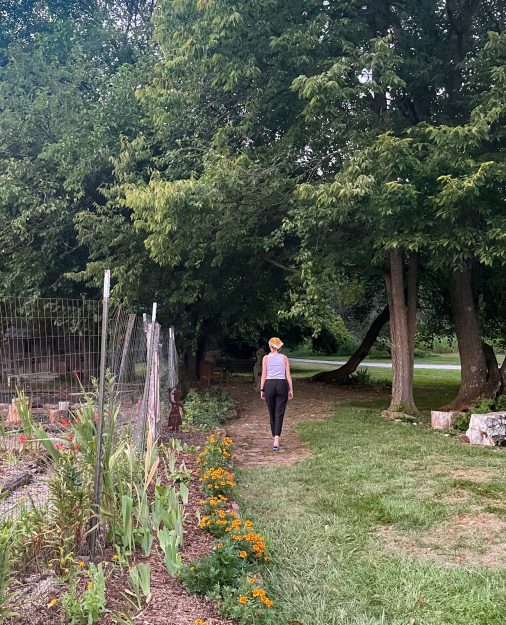
The latter part of the retreat was when I truly began to experience an openness, softness, and gratitude. I explored the many winding trails with a curious mind and soft feet, and at each turn I was in awe of everything—the dewy spider webs collecting in the trees; the family of deer grazing in the fields; the group of horses running in the hazy dawn. I relaxed into the experiences that moved around and within me, an awareness surfacing moment by moment, almost effortlessly.
The spider webs especially drew me in. Really looking at them, like I had never seen them before, I asked myself, What was their purpose? What can they teach me? I closely studied an armor-backed spider weaving its web. It was focused, detailed, mindful even. Pulling the silk with its back leg to place it where it wanted, creating an intricate mandala that was strong yet fragile. The web is what sustains the spider, a net to catch its food. But with a strong gust of wind or a creature like me walking into it, the entire trap is gone. I imagine that the spider doesn’t mind—it is used to this happening. It isn’t attached to the work of art it has just made, rather just picks up in a new spot to weave another.
I came back to the question, what can the spiders teach me? I landed on a visualization for myself—a spider web in my mind, like a death trap for old patterns and stories. I let them stick to the web, then blow away in the wind. Weaving a new web in my mind, I was then ready for the next story to stick.
On the second-to-last day I had a one-on-one practice discussion with Nikki. She graciously set aside time for each of us to meet with her during the retreat. Holding a warm space for me to share whatever I wanted to share, she listened intently and offered nuggets of wisdom for me to take with me on my way.
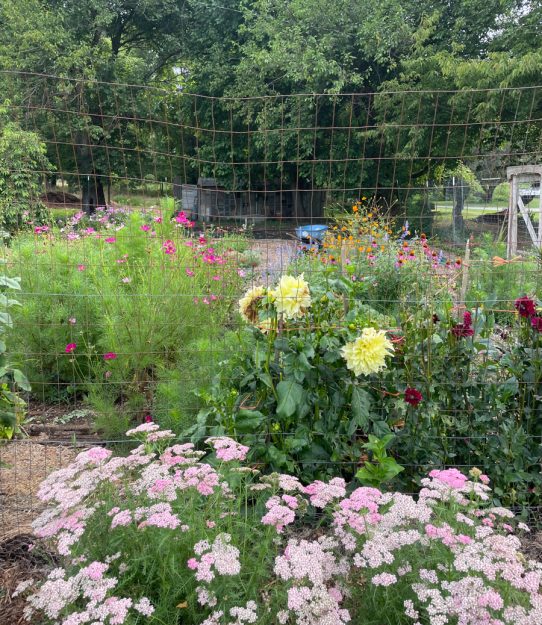
The final full day came, and I enjoyed a midmorning walking meditation along a gravel path in the woods. This is where I rediscovered the sound of gravel under my feet. Crunching and crackling as I stepped softly, the sound wrapped around my eardrums and delighted me. I moved my foot different ways as I walked back and forth, listening to each piece of gravel colliding with those around it. After a few more meditation sessions and a cup of tea on a warm rock in the sun, I thanked the land for providing, quite literally, such fertile ground for practice.
My retreat experience was one of spaciousness, compassion, warmth, and a collective energy that was fostered so beautifully by our teacher, Nikki. I left feeling calmer than I had in a while, more in awe of everything around me, and more connected to others. The retreat came to an official end as we broke noble silence, and kind chatter filled the building and grounds as we shared our experiences and contact information. Going on our way, we wished one another luck with our respective practices, and said goodbye until next time.
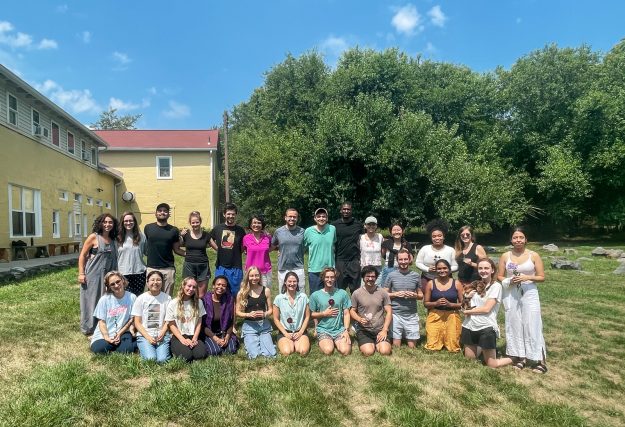
♦
Dharma Gates offers many retreats by donation! Learn more about them and see their upcoming retreats here.
Thank you for subscribing to Tricycle! As a nonprofit, we depend on readers like you to keep Buddhist teachings and practices widely available.
